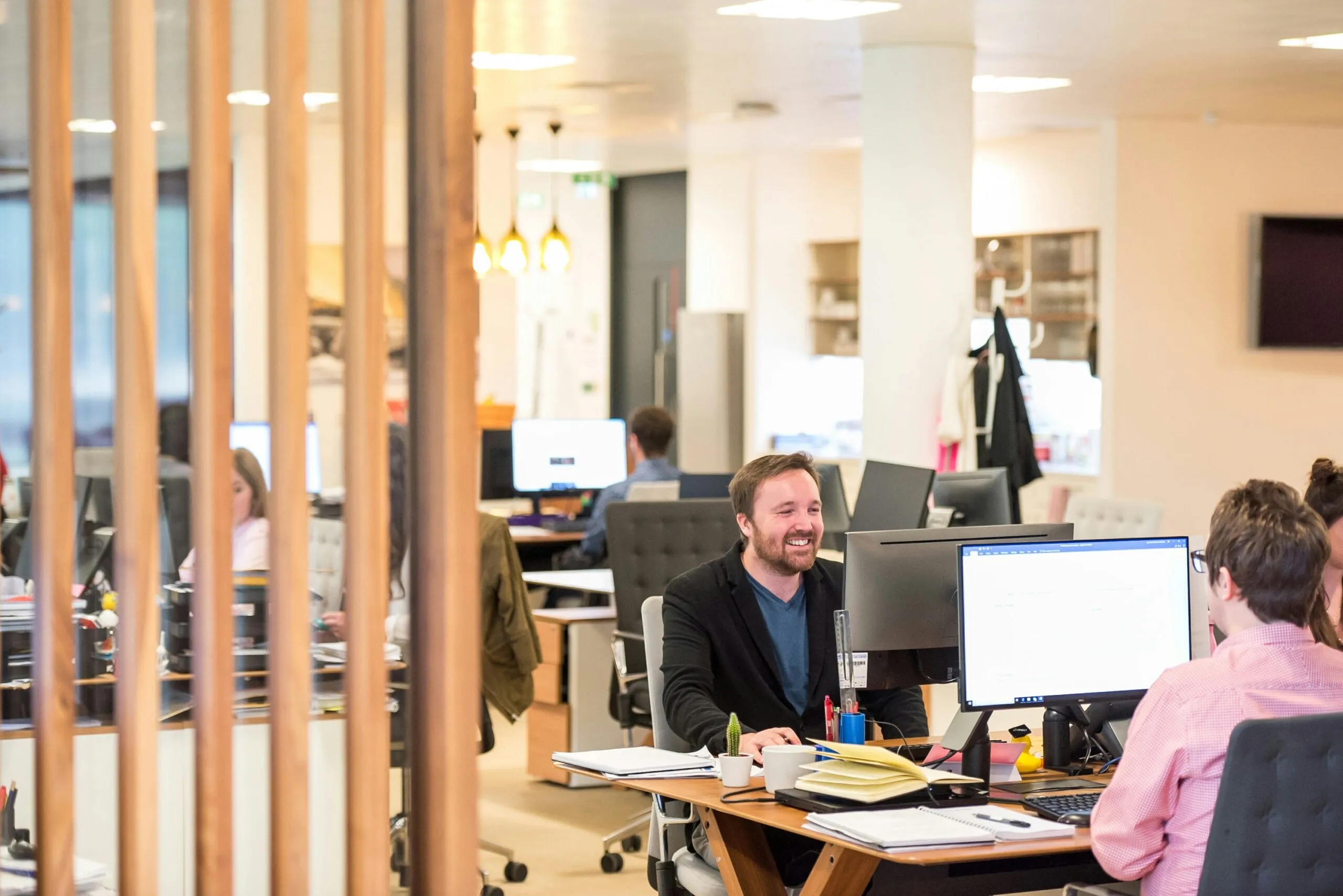
Is Your Workplace Environment Conducive to Collaboration Amid Generational Differences?
As younger employees join your workforce and older employees remain employed for longer, your organisation is likely to become a multigenerational workforce. This diversity of age demographics presents leaders with many challenges that must be overcome. In this article, we examine seven of these challenges.
Understanding Generational Differences
Understanding generational differences is crucial for effective management in today’s multi-generational workforce. Each generation brings unique attributes, values, and experiences that shape their perspectives and behaviours. By recognising and embracing these differences, organisations can foster a more inclusive and productive work environment.
Generational differences can be attributed to various factors, including historical events, technological advancements, and cultural shifts. For instance, Baby Boomers grew up during a time of economic prosperity and social change, while Generation Z is characterised by their digital nativity and diverse backgrounds. Understanding these differences can help managers tailor their leadership styles, communication approaches, and professional development opportunities to meet the needs of each generation.
Moreover, recognising generational differences can help bridge the generational gap and promote knowledge sharing between older and younger employees. By leveraging the strengths of each generation, organisations can create a more collaborative and innovative work environment. For example, younger employees can bring fresh ideas and technological expertise, while older employees can offer valuable experience and mentorship.
Benefits of a multi-generational Workforce
A multi-generational workforce offers numerous benefits to organisations, including increased productivity, improved decision-making, and enhanced innovation. By embracing generational diversity, organisations can tap into the unique strengths and perspectives of each generation, leading to better problem-solving and a more competitive edge.
Moreover, a multi-generational workforce can help organisations attract and retain top talent, as employees of all ages are drawn to inclusive and diverse work environments. By offering flexible work arrangements, professional development opportunities, and a culture of respect and empathy, organisations can create a workplace that appeals to multiple generations.
Additionally, a multi-generational workforce can help organisations better understand and serve their diverse customer base. By having employees from different generations and backgrounds, organisations can gain valuable insights into the needs and preferences of their customers, leading to improved customer satisfaction and loyalty.

Collaborative team working on Talent Development
1. Age
There are many personal challenges associated with age, and these manifest in the workplace. Younger employees may desire more flexibility and the opportunity to work from home. Older employees may have more exacting wellness needs. Leaders should create the flexible workplace environment that addresses the needs of all employees, promoting a healthy work life balance.
2. Values
Our values are determined by many factors, including upbringing and experiences. Older generations have lived through the Cold War and economic strife. They were raised by parents who suffered war during World War II. They took part in civil rights movements. Younger generations have been at the forefront of technological advance, and are living with a future shaped by climate change.
Baby boomers expect millennials to have the same commitment to hard work and long hours. Millennials expect more flexibility and shorter hours in the office with greater autonomy. Leaders must manage these conflicting values, respecting all workers and helping each to understand and accept the different ways in which full contributions are made.
3. Workplace Relationship Issues
Older employees, particularly those from the Silent Generation, tend to be more conservative in their approach to workplace relationships. They have been conditioned that work is work, and personal issues should be left at the door. However, today mental health and wellbeing is considered of great importance. Employees are encouraged to discuss a wider range of issues, and organisations accept the overlap between personal and professional lives more readily. This can create friction between employees, as some wish to discuss subjects that others consider to be taboo.
Organisations are combatting this challenge by providing ‘safe spaces’’ where controversial subjects may be discussed openly, and equipping managers with the skills to carefront rather than confront conflict between work colleagues.
4. Feedback
The need for feedback differs between generations. Younger employees tend to thrive on constant feedback, whereas older workers require less. For older employees, feedback should be given when necessary, not when desired.
How does a leader know how often to give feedback? Ask each employee, and set a schedule for them. Remember, though, that continuous communication leads to healthier relationships, and less confusion when honest truths are finally revealed.
5. Preferred Communication Styles Across Generations
The communication preferences of different generations in the workplace stretch from the millennials’ use of social media and digital communication channels, to the baby boomers’ desire for face-to-face conversation or email.
An organisation must establish how best to communicate, and set a strategy that embraces all preferences. For example, a team meeting may be followed up by a video summary posted to employees’ email inboxes or on the company’s intranet.
6. Dress Code
Older workers, who witnessed the rise of personal computers, are used to the formality of workwear. It helps them draw a line between their professional self and their personal self. Younger workers are more likely to wish to wear the same clothes in the office as they would outside. While many organisations have relaxed their dress code, many have not. This can cause conflict between employees and management.
While there is no single correct answer to dress code – often it is part of the DNA of an organisation – it is important that, while a workplace may not have a uniform, workplace dress code is uniform and observed consistently by all.
7. Perceptions of Work Ethics
Older generations often accuse younger workers of having poor work ethics. However, perception of work ethic varies between generations.
Older employees are more likely to remain at work until their work is complete before leaving for home. They see younger employees leaving before their work is complete and believe that this is indicative of a poor work ethic. However, these younger employees – often more digitally adept – may be working remotely from home, where they feel more relaxed and productive.
Organisations may combat these perceptions by managing by performance and introducing workplace project management systems to routine. Taking this action often helps people to work more collaboratively and understand that being office based is not always necessary to be productive.
Accommodating Diverse Working Styles and Needs
Accommodating diverse working styles and needs is essential for creating an inclusive and productive work environment. Organisations can offer flexible work arrangements, such as telecommuting, flexible hours, and compressed workweeks, to accommodate the needs of employees with caregiving responsibilities, health issues, or other personal circumstances.
Moreover, organisations can provide a range of benefits and perks, such as wellness programs, employee assistance programs, and professional development opportunities, to support the well-being and career advancement of employees. By recognising and accommodating the diverse needs and preferences of employees, organisations can create a workplace that is inclusive, supportive, and empowering.
Furthermore, organisations can use technology to facilitate communication and collaboration among employees, regardless of their location or work style. By leveraging digital tools and platforms, organisations can create a virtual workspace that is accessible, flexible, and inclusive, allowing employees to work effectively and efficiently from anywhere.
In Summary
In multigenerational workplaces there is a wide diversity of values, preferred communication styles, mental wellbeing issues and preferred methods of working. Differences even stretch to how employees dress for work.
When leaders understand the different characters of each generation, they will more easily discover the strengths of each generation and use these to improve collaboration. To build a cohesive team, managers must create a workplace environment that allows all generations to contribute fully and embrace the qualities of their work colleagues.
Contact us today, and discover how we could help your managers and leaders be more effective in developing multigenerational teams and foster the collaboration that delivers high performance.



